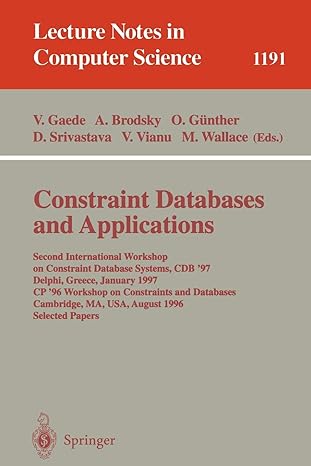Question
Data set: https://file.io/UwfKfn This is to be done in XLMiner --- Please ask for data set Create dummies for day of week, carrier, departure airport,
Data set: https://file.io/UwfKfn
This is to be done in XLMiner --- Please ask for data set
Create dummies for day of week, carrier, departure airport, and arrival airport. This will give you 17 dummies. Bin the scheduled departure time into 2hour bins (in XLMiner use Data Utilities > Bin Continuous Data and select 8 bins with equal width). After binning DEP_TIME into 8 bins, this new variable should be broken down into 7 dummies (because the effect will not be linear due to the morning and afternoon rush hours). This will avoid treating the departure time as a continuous predictor because it is reasonable that delays are related to rush-hour times. Partition the data into training and validation sets.
a. Fit a classification tree to the flight delay variable using all the relevant predictors. Do not include DEP_TIME (actual departure time) in the model because it is unknown at the time of prediction (unless we are doing our predicting of delays after the plane takes off, which is unlikely). In the third step of the classification tree menu, choose Maximum # levels to be displayed = 6. Use the best pruned tree without a limitation on the minimum number of observations in the final nodes. Express the resulting tree as a set of rules.
b. If you needed to fly between DCA and EWR on a Monday at 7 AM, would you be able to use this tree? What other information would you need? Is it available in practice? What information is redundant?
c. Fit another tree, this time excluding the day-of-month predictor. (Why?) Select the option of seeing both the full tree and the best pruned tree. You will find that the best pruned tree contains a single terminal node.
i. How is this tree used for classification? (What is the rule for classifying?)
ii. To what is this rule equivalent?
iii. Examine the full tree. What are the top three predictors according to this tree?
iv. Why, technically, does the pruned tree result in a tree with a single node?
v. What is the disadvantage of using the top levels of the full tree as opposed to the best pruned tree?
vi. Compare this general result to that from logistic regression in the example in Chapter 10. What are possible reasons for the classification trees failure to find a good predictive model?
Step by Step Solution
There are 3 Steps involved in it
Step: 1

Get Instant Access to Expert-Tailored Solutions
See step-by-step solutions with expert insights and AI powered tools for academic success
Step: 2

Step: 3

Ace Your Homework with AI
Get the answers you need in no time with our AI-driven, step-by-step assistance
Get Started


